Related Research Articles

Deerfield is a town in Franklin County, Massachusetts, United States. Settled near the Connecticut River in the 17th century during the colonial era, the population was 5,090 as of the 2020 census. Deerfield is part of the Springfield, Massachusetts Metropolitan Statistical Area in western Massachusetts, lying 30 miles (48 km) north of the city of Springfield.

Boylston is a town in Worcester County, Massachusetts, United States. The population was 4,849 at the 2020 census.

Clinton is a town in Worcester County, Massachusetts, United States. The population was 15,428 at the 2020 census.

Newbury is a town in Orange County, Vermont, United States. The population was 2,293 at the 2020 census. Newbury includes the villages of Newbury, Center Newbury, West Newbury, South Newbury, Boltonville, Peach Four Corners, and Wells River.

Mary Rowlandson, née White, later Mary Talcott, was a colonial American woman who was captured by Native Americans in 1676 during King Philip's War and held for 11 weeks before being ransomed. In 1682, six years after her ordeal, The Sovereignty and Goodness of God: Being a Narrative of the Captivity and Restoration of Mrs. Mary Rowlandson was published. This text is considered a formative American work in the literary genre of captivity narratives. It went through four printings in 1682 and garnered readership both in the New England colonies and in England, leading some to consider it the first American "bestseller".

Events from the year 1704 in Canada.

The Raid on Deerfield, also known as the Deerfield Massacre, occurred during Queen Anne's War on February 29, 1704, when French and Native American raiders under the command of Jean-Baptiste Hertel de Rouville attacked the English colonial settlement of Deerfield, Massachusetts Bay, just before dawn. They burned parts of the town and killed 47 colonists. The raiders left with 112 colonists as captives, whom they took overland the nearly 300 miles to Montreal; some died or were killed along the way because they were unable to keep up. Roughly 60 colonists were later ransomed by their associates, while others were adopted by Mohawk families at Kahnawake and became assimilated into the tribe. In this period, English colonists and their Indian allies were involved in similar raids against French villages along the northern area between the spheres of influence.
The Pennacook, also known by the names Penacook and Pennacock, were an Algonquian-speaking Indigenous peoples of the Northeastern Woodlands who lived in Massachusetts, New Hampshire, and southern Maine. They were not a united tribe but a network of politically and culturally allied communities. Penacook was also the name of a specific Native village in what is now Concord, New Hampshire.

Odanak is an Abenaki First Nations reserve in the Central Quebec region, Quebec, Canada. The mostly First Nations population as of the Canada 2021 Census was 481. The territory is located near the mouth of the Saint-François River at its confluence with the St. Lawrence River. It is partly within the limits of Pierreville and across the river from Saint-François-du-Lac. Odanak is an Abenaki word meaning "in the village".
Eunice Williams, also known as Marguerite Kanenstenhawi Arosen, was an English colonist taken captive by French and Mohawk warriors from Deerfield, Massachusetts in 1704. Taken to Canada with more than 100 other captives, the seven-year-old girl was adopted by a recently converted Mohawk family at Kahnawake and fully assimilated into Mohawk society. She was baptized as the Catholic "Marguerite" and renamed A'ongonte, meaning "she who has been planted as an ash tree." She eventually married a Mohawk man, François-Xavier Arosen, having several children and remaining with the Mohawk for the rest of her life. While choosing not to return to her natal family, she, along with her children, repeatedly made the trek to Deerfield to visit with her Puritan siblings over the course of her life. Her father, Rev. John Williams and her brother Samuel made numerous efforts to ransom her to no avail. Moreover, they failed to persuade her to return to Massachusetts and her birth family.
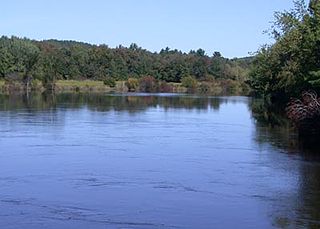
The Nashaway were a tribe of Algonquian Indians inhabiting the upstream portions of the Nashua River valley in what is now the northern half of Worcester County, Massachusetts, mainly in the vicinity of Sterling, Lancaster and other towns near Mount Wachusett, as well as southern New Hampshire. The meaning of Nashaway is "river with a pebbled bottom".
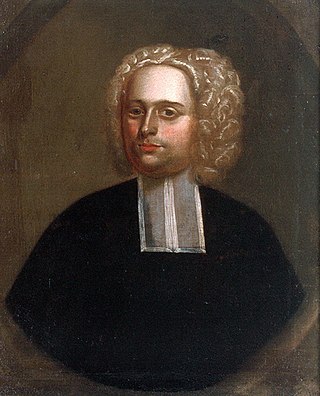
John Williams was a New England Puritan minister who was the noted pastor of Deerfield from 1688 to his death. He and most of his family were taken captive in the Raid on Deerfield in 1704 during Queen Anne's War. He was held by the French in Montreal for more than two years, who wanted a high-ranking French pirate in exchange. After being released in late 1706, Williams became even more notable for The Redeemed Captive (1707), his account of his captivity. It became a well-known work in the genre of captivity narratives.
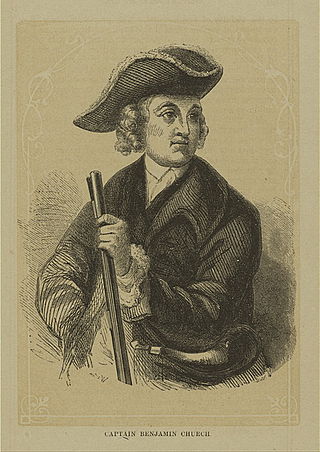
The Raid on Grand Pré was the major action of a raiding expedition conducted by the New England militia Colonel Benjamin Church against French Acadia in June 1704, during Queen Anne's War. The expedition was allegedly in retaliation for a French and Indian raid against the Massachusetts frontier community of Deerfield earlier that year.
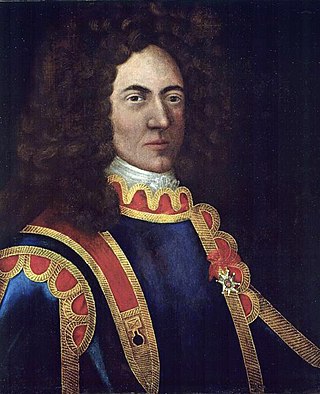
The Raid on Haverhill was a military engagement that took place on August 29, 1708, during Queen Anne's War. French, Algonquin, and Abenaki warriors under the command of Jean-Baptiste Hertel de Rouville descended on Haverhill, then a small frontier community in the Province of Massachusetts Bay. In the surprise attack, 16 people were killed and another 14 to 24 were taken captive. A rapid militia muster gave chase, and in a skirmish later in the day, nine of the French and Indian party were killed and some of their prisoners escaped.
The Northeast Coast campaign was the first major campaign by the French of Queen Anne's War in New England. Alexandre Leneuf de La Vallière de Beaubassin led 500 troops made up of French colonial forces and the Wabanaki Confederacy of Acadia. They attacked English settlements on the coast of present-day Maine between Wells and Casco Bay, burning more than 15 leagues of New England country and killing or capturing more than 150 people. The English colonists protected some of their settlements, but a number of others were destroyed and abandoned. Historian Samuel Drake reported that, "Maine had nearly received her death-blow" as a result of the campaign.
Rebecca Kellogg Ashley was an English child captured by allied French, Canadian militia, Iroquois, and Algonquin soldiers in the 1704 Deerfield Raid. The Deerfield attack was part of the decade-long Queen Anne's War. Rebecca was eight years old. Eunice Williams was captured in this same raid, as was her father, John Williams who wrote about his captive experience in The Redeemed Captive. Like Eunice and several other children from Deerfield, Rebecca Kellogg was adopted by Haudenosaunee Mohawks in the town of Kahnawake. She married and she raised children.
The Battle of Falmouth was fought at Falmouth, Maine when the Canadiens and Wabanaki Confederacy attacked the English New Casco Fort. The battle was part of the Northeast Coast Campaign (1703) during Queen Anne's War.
Elizabeth Mary Sadoques Mason was one of the first Native American Registered Nurses known in United States. Though not much is known about her career, Elizabeth finished nursing school in New York in 1919 and worked as a nurse to artist Abbot Handerson Thayer.

Wattaquadock Hill is a 640-foot (200 m) hill and ridge in southwest Bolton, Massachusetts and the site of a 15-acre (6.1 ha) wooded conservation area containing hiking trails and wetlands. It is the highest point in Bolton.
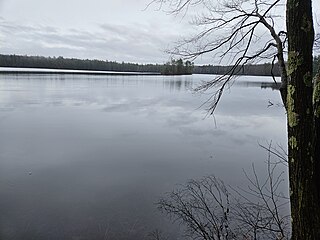
Sholan was the leader (sachem) of the Nashaway tribe who lived on small hill between the two Waushacum Lakes in what is now Sterling, Massachusetts.
References
- ↑ William O. Dupuis, Society Vice President and Director, "Lives Thus Spent" ( 1986). Boylston Historical Society, Vol. 1, No. 6, 1 November 1999.https://www.boylstonhistory.org/email1-6.htm accessed 28 March 2024.
- ↑ Dwayne W. Pickett, Captain William Hilton and the Founding of Hilton Head Island, (2019), p. 20
- ↑ "THE history of the PENACOOKS, a powerful Indian tribe" pp. 34–37 https://www.concordnh.gov/DocumentCenter/View/672/Concord-History-Chapter-I?bidId=
- ↑ James Phinney Baxter, The Baxter Manuscripts - Volume 23 (1916), p. 22 footnotes
- ↑ Colin Gordon Calloway, After King Philip's War: Presence and Persistence in Indian ... (1997), p. 45
- ↑ "Wattanummon Pennacook - Wôbanaki, c. 1660 – 1712" 1704.deerfield.history.museum/popups/people.do?shortName=Wattanummon (accessed 3/28/2024)
- ↑ April 16, 1700 'America and West Indies: April 1700, 16-20', in Calendar of State Papers Colonial, America and West Indies: Volume 18, 1700, (London, 1910) pp. 170-190. British History Online https://www.british-history.ac.uk/cal-state-papers/colonial/america-west-indies/vol18/pp170-190 [accessed 24 March 2024]
- ↑ July 1700 July 22. Boston 'America and West Indies: July 1700, 22-25', in Calendar of State Papers Colonial, America and West Indies: Volume 18, 1700, (London, 1910) pp. 424-430. British History Online https://www.british-history.ac.uk/cal-state-papers/colonial/america-west-indies/vol18/pp424-430 [accessed 25 March 2024]
- ↑ Nourse, Indian Names in Worcester County https://www.nipmuclanguage.org/uploads/5/0/7/7/50775337/indian_names_worc..pdf (accessed 3/28/24)
- ↑ The Story of Colonial Lancaster, p. 3, 60-61 https://ia601009.us.archive.org/31/items/storyofcoloniall00saff/storyofcoloniall00saff.pdf (accessed 3/30/24)
- ↑ Evan Haefeli, Kevin Sweeney, Captors and Captives: The 1704 French and Indian Raid o, (2003), p.87
- ↑ Historical Documents of Indians of the Far Northeast, accessed March 29, 2024, https://hrifne.avantlogic.net/digitalarchive/items/show/48262.Item54321
- ↑ "Wattanummon Pennacook - Wôbanaki, c. 1660 – 1712" 1704.deerfield.history.museum/popups/people.do?shortName=Wattanummon (accessed 3/28/2024)
- ↑ Evan Haefeli, Kevin Sweeney, Captive Histories: English, French, and Native Narratives of the 1704 Deerfield Raid (2006), p. 160
- ↑ John Williams, The Redeemed Captive Returning to Zion: Or, The Captivity ..." (1908), p.50
- ↑ "Revisiting The Redeemed Captive: New Perspectives on the 1704 Attack on Deerfield," Evan Haefeli and Kevin Sweeney, The William and Mary Quarterly, Vol. 52, No. 1 (Jan., 1995), pp. 3-46 (44 pages)
- ↑ Brotherhood of Locomotive Engineers' Monthly Journal (1888)p. 1020
- ↑ Dupuis
- ↑ http://www.concordnh.gov/DocumentCenter/View/849/Lyford-V1-Chapter-12-Part-1?bidId= (accessed 3/29/24)